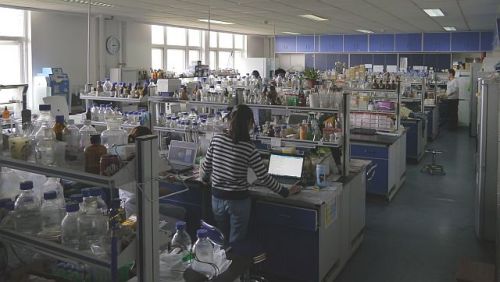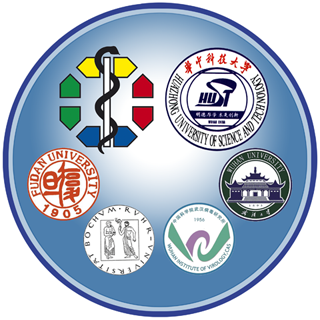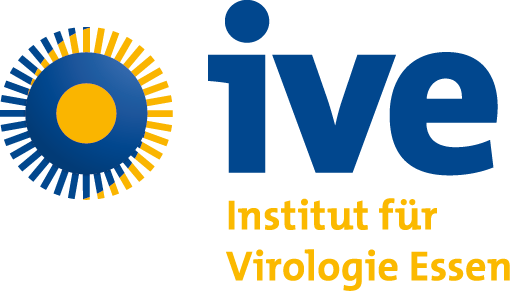Project Part A

Project Part A:
Innate immunity and immunopathogenesis
目标A:
天然免疫和免疫发病机制
Project A1:
The interplay between Toll like receptors,
interferons, and hepatitis B virus
TLR 系统,干扰素与乙型肝炎病毒的相互作用
Prof. Dr. Zhenghong Yuan, Prof. Dr. Youhua Xie
Key Lab of Medical Molecular Virology, Shanghai
袁正宏研究员、谢幼华教授
复旦大学上海医学院医学分子病毒学卫生部、教育部重点实验室
We dealt with the molecular mechanisms how HBV manipulate innate immune responses by interfering TLR signaling, IFN-α production and signaling by modification of key molecules in the corresponding pathways. We will continue the analysis to identify the specific strategies targeting innate immune responses by HBV and explore these processes of restoring the effective antiviral mechanism, thus regaining control of HBV replication and finally curing HBV infection.
Project A2:
The impact of hepatitis C virus on human B cells and its role in B cell lymphoproliferative disorders
型肝炎病毒对人类B淋巴细胞的影响及在淋巴细胞增殖性疾病中的作用
Prof. Dr. Ralf Küppers - Institute for Cell Biology, Essen
PD Dr. Jan Dürig - Dept. of Hematology, Essen
As a first aim, we want to characterize the occurrence and characteristics of monoclonal B cell expansions in HCV patients (monoclonal B cell lymphocytosis (MBL) and mixed cryoblobulinema) without lymphomas. This includes determination of the specific B cell subsets that give rise to MBL and determination by deep sequencing of isolated clones whether they already carry genetic lesions and hence represent pre-malignant B cells. Secondly, we aim to determine the landscape of somatic mutations in HCV-associated B cell lymphomas to clarify whether such tumors have a specific, HCV-related pathogenesis. Thirdly, we will study the direct influences of HCV on B cells in culture in terms of signaling pathway activations and altered gene expression to reveal the mechanisms by which HCV affects B cell fate and physiology.
Project A3 (ended):
Activation of Hypoxia Inducible Factor 1 (HIF-1) transcriptional complex during retroviral infection and its role in immune activation
Prof. Dr. J. Fandrey, Dr. Stilla Frede/Dr. Sandra Winning
Institute for Physiology, Essen
Project A6 (ended):
Structure based development of mini-proteins for interference with specific HIV-host interactions
Prof. Dr. Daniel Hoffmann, Bioinformatics, Essen
Prof. Dr. Peter Bayer, Structural & Medical Biochemistry, Essen
Project A7N:
Viral exploitation of DDB1 as strategy to impede innate immunity
病毒利用DDB1分子进行免疫逃避的机制研究
Prof. Dr. Mirko Trilling, Dr. Kanh Le - Institute for Virology, Essen
DDB1, a cellular adapter protein for certain Cullin ubiquitin ligases, is exploited by numerous viruses.
We will determine and compare the interactomes of several viral DDB1 binders (e.g. HBx of HBV) by a biochemical mass-spectrometrical approach.
By genetically swapping the mouse cytomegalovirus gene M27, which encodes a DDB1 binding interferon antagonist, against other viral DDB1 binders,we will address the pathobiological relevance of such proteins in vitro und in vivo.
Additionally, we will examine the antiviral activity of the indirect Cullin ubiquitin ligase inhibitor MLN-4924
Project A8N:
Hepatitis C virus-induced pro-inflammatory
network and host antiviral innate immune response
HCV感染过程中宿主炎症反应和抗病毒免疫应答
Prof. Dr. Ying Zhu, College of Life Sciences, Wuhan University
朱应 教授, 武汉大学生命科学学院病毒学国家重点实验室
Our previous study demonstrates that human peripheral blood mononuclear cells (PBMCs) are a good model to investigate inflammation and host immune responses. Most viruses trigger robust cytokines expression in PBMCs although viral infection is not productive. Using a combination of cell cultures, PBMCs models and clinical biopsy samples analyses, we are trying to answer fundamental questions in the virally induced proinflammatory network and the host antiviral innate immune response.
In the present project, we expect to answer the following questions:
1. What is the exact role of host MVP in IFN signaling pathways and the proteins interacting with MVP in the process of hepatitis viral infection?
2. How do aberrant epigenetic modifications regulate inflammatory cytokine expression and host antiviral innate immune responses ?
Project A9N:
The role of MAPK and MITA/IFN signal pathways in Hepatitis C Virus infection
HCV感染过程中MAPK和MITA/IFN信号通路在天然免疫反应中的作用
Prof. Dr. Xinwen Chen, Institute of Virology, Wuhan
陈新文研究员, 中国科学院武汉病毒研究所
MAPK activation and IFN production are two aspects of innate immune response during virus infection. The MAPK pathway plays an important role in the survival of infected host cells. On the other hand, IFN production in innate immune responses restricts the virus replication at a low level. In this project we will study the two features of innate immune responses: the role of MAPK signaling pathways in innate immune responses and HCV replication and the modulation of MITA signaling by MRP. The role of MRP and MITA during HCV infection will be studied in detail.


